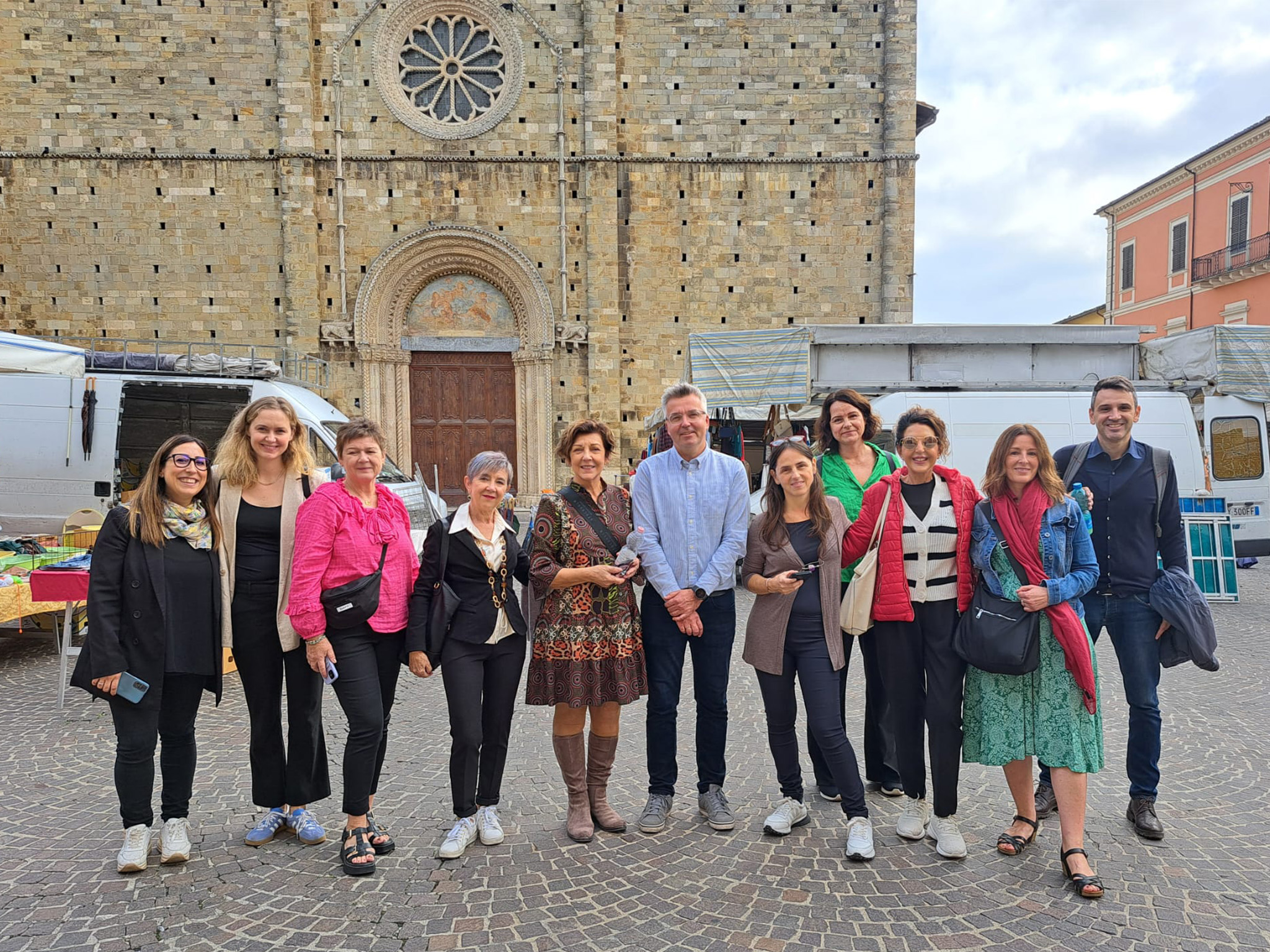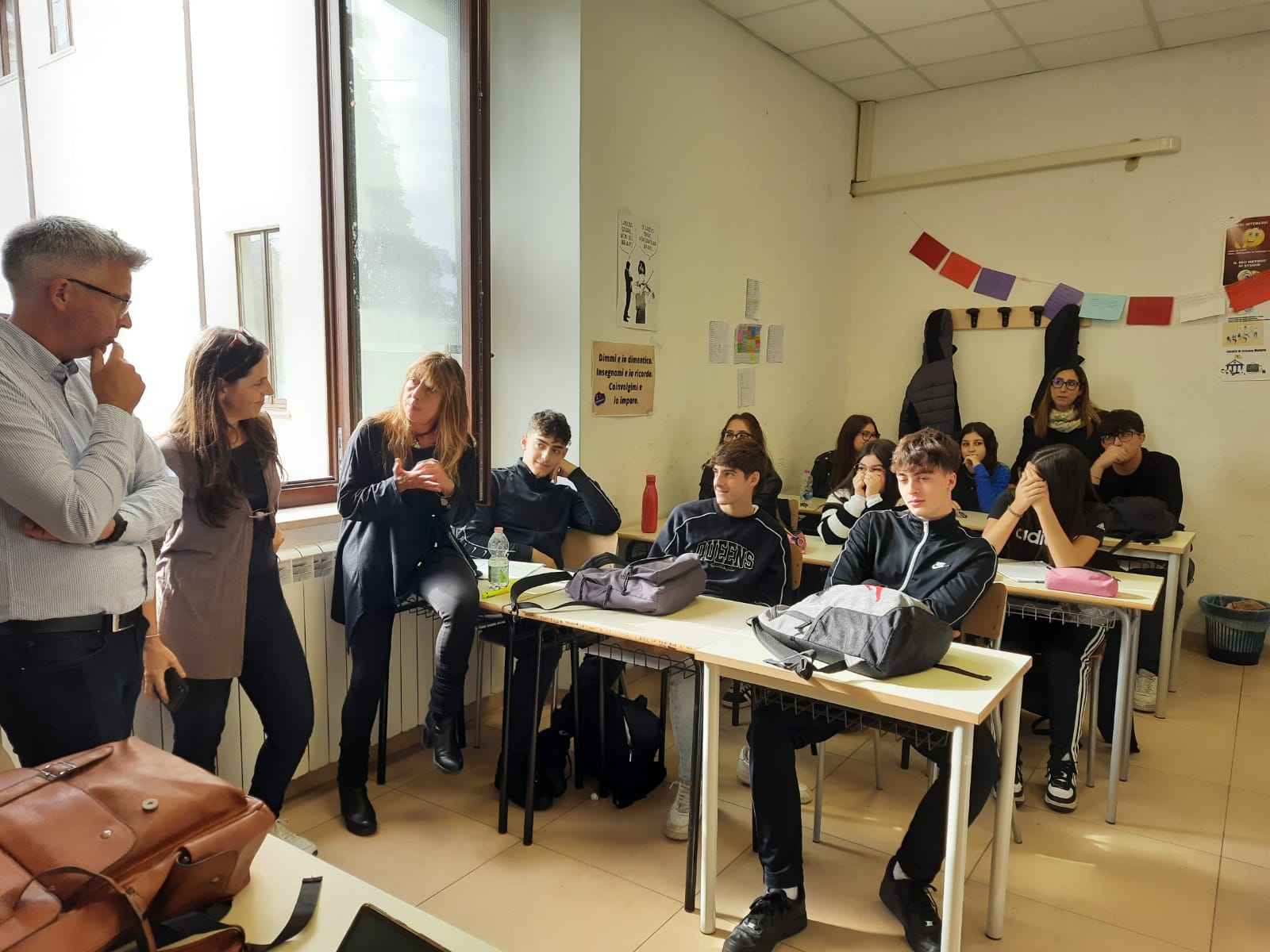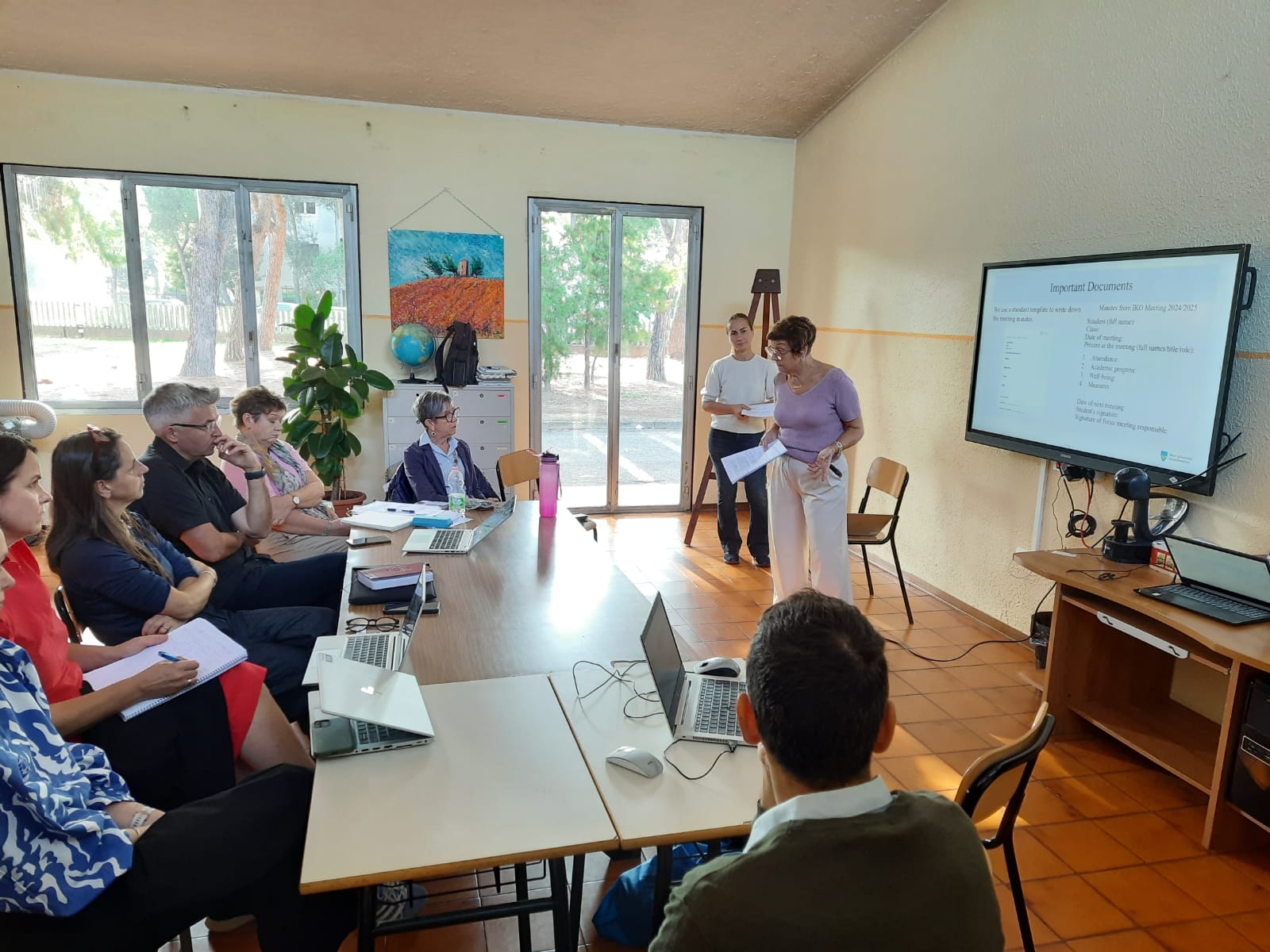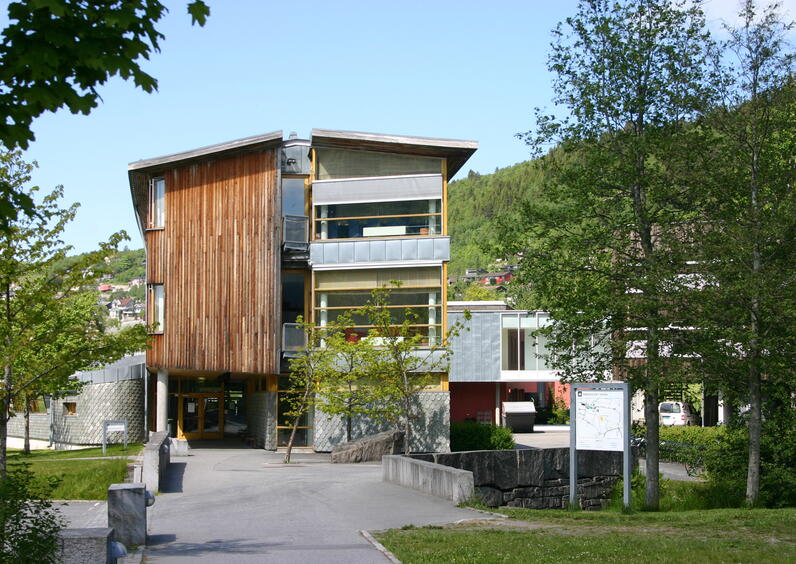Preventing dropout in vocational education
The dropout rate in secondary education is greatest among vocational students. A Norwegian-Italian collaboration aims to reduce dropout rates in vocational education.

På besøk hos yrkeselevane på kokkelinja ved skulen Adone Zoli, som ligg i kommunen Atri i Abruzzo-regionen aust for Roma. Nedst til høgre sit Nathalie Homlong. Foto: Franca Musu.
Despite ambitious goals for completion rates in Norwegian secondary school, school dropout rates are still a major problem. Statistics show that vocational education is the most troubled: with nearly 30 per cent of students dropping out midway through their education (ssb.no).
This is not a uniquely Norwegian phenomenon. Also in countries such as Italy, school dropout rates in vocational education are an issue that politicians and school leaders have to deal with. A new European project collaboration will now try to do something about the problem.
The project aims to detect early on whether vocational students are at risk of dropping out of school, and to come up with new measures to reduce the dropout rate.
Two Norwegian and two Italian partners
– It actually started with a random chat on holiday in Montenegro, says Professor Nathalie Homlong at Volda University College (VUC).
This is how the contact between VUC and the Italian organisation Ilmiofuturo, arose. Ilmiofuturo specialises in coordinating EU projects. Over time, this Norwegian-Italian connection has become a fruitful, interdisciplinary partnership.
In addition to project cooperation, the Italian partnership has also provided placement opportunities in Italy for students at the Institute for Planning, Administration and Social Sciences (IPAS) at VUC.
This new collaborative project aimed at preventing school dropout in secondary education is titled "Keep studying" and is supported by the EU program Erasmus+.
The project coordinator is Ørsta vocational secondary school, while Adone Zoli, a corresponding vocational school in the Abruzzo region in Italy, is the fourth partner in the R&D project.
– Since Ørsta Secondary School has little experience with such EU-funded projects from the past, I support them in coordinating the project, says Homlong.

Student interviews and a new app are among the tools
The project started in spring 2024. In June, an Italian delegation came to Norway, and more recently representatives from Ørsta Secondary School and VUC visited the partner school in Italy. Like the vocational secondary school in Ørsta, the Italian sister school offers a track in culinary science - something the Norway delegation got a tasty proof of.
In the first phase of the project, the researchers conducted a survey with questionnaires for the schools and in-depth interviews with a total of 30 Norwegian and Italian vocational students who have experienced difficulties.
– This way we can better understand what their challenges are. It can be anything from dissatisfaction with the choice of education or the teachers, to social difficulties in the school environment, problems at home or health problems. We also evaluate these findings in the light of relevant literature in the field, says Homlong.
The project will also try out an app that is developed through the "Keep studying" project.
– This app can be used by teachers and social workers in collaboration, for example to better detect whether a student struggles socially or does not attend certain classes. Relevant early warning signs can then be shown in the app and dealt with at an earlier stage, Homlong explains.
The results will benefit many
In the second phase of the project, which is intended to last until June 2025, the researchers will find measures that can help even more vocational students to complete their education.
– These measures can focus on how to prevent students from becoming isolated, how to help them find friends among their fellow students, how to improve home-school communication, and the like, Homlong elaborates.
Since "Keep studying" is an Erasmus+ project, the results should benefit both Norwegian, Italian and other European students.
– We hope that in the long term more people can use the app to discover whether students are at risk, before it is too late and they have "opted out", and that our project helps more schools than the two included in the project itself. The idea is to find tools that schools all over Europe can make use of.
Mutual inspiration
The collaboration partners from two corners of Europe see both similarities and differences in culture and the school system. And the experience has been mutually inspiring for participants:
– When the Italians came to Ørsta, they were full of praise for what the school offers here, and the same thing happened when the Norwegian delegation visited Italy - especially the staff from Ørsta vocational school were impressed by the kitchen in the Italian school, smiles Homlong.
One major difference, which may also affect school dropout, is that in Italy students already start vocational school at the age of 14.
– The early start of vocational school means that parents play a greater role in the children's career choices. But we still have enough common factors for the research project to work in both countries.
"Keep studying" has so far been valuable both in terms interdisciplinary and cross-cultural outputs. From VUC, Nathalie Holong and Kari Hasle from the Institute for planning and Administration and Ester Alnes Osnes from the Department of Teacher Education are part of the project group.
– There are not that many research projects at VUC where we collaborate across the various faculties and departments, so we appreciate this aspect of the project, says Homlong.
And the cultural differences from north to south?
– It is fantastic to be able to collaborate with our Italian partners. They are so friendly and warm-hearted and put so much into their work. It is inspiring and we look forward to building on this collaboration, concludes Homlong.







